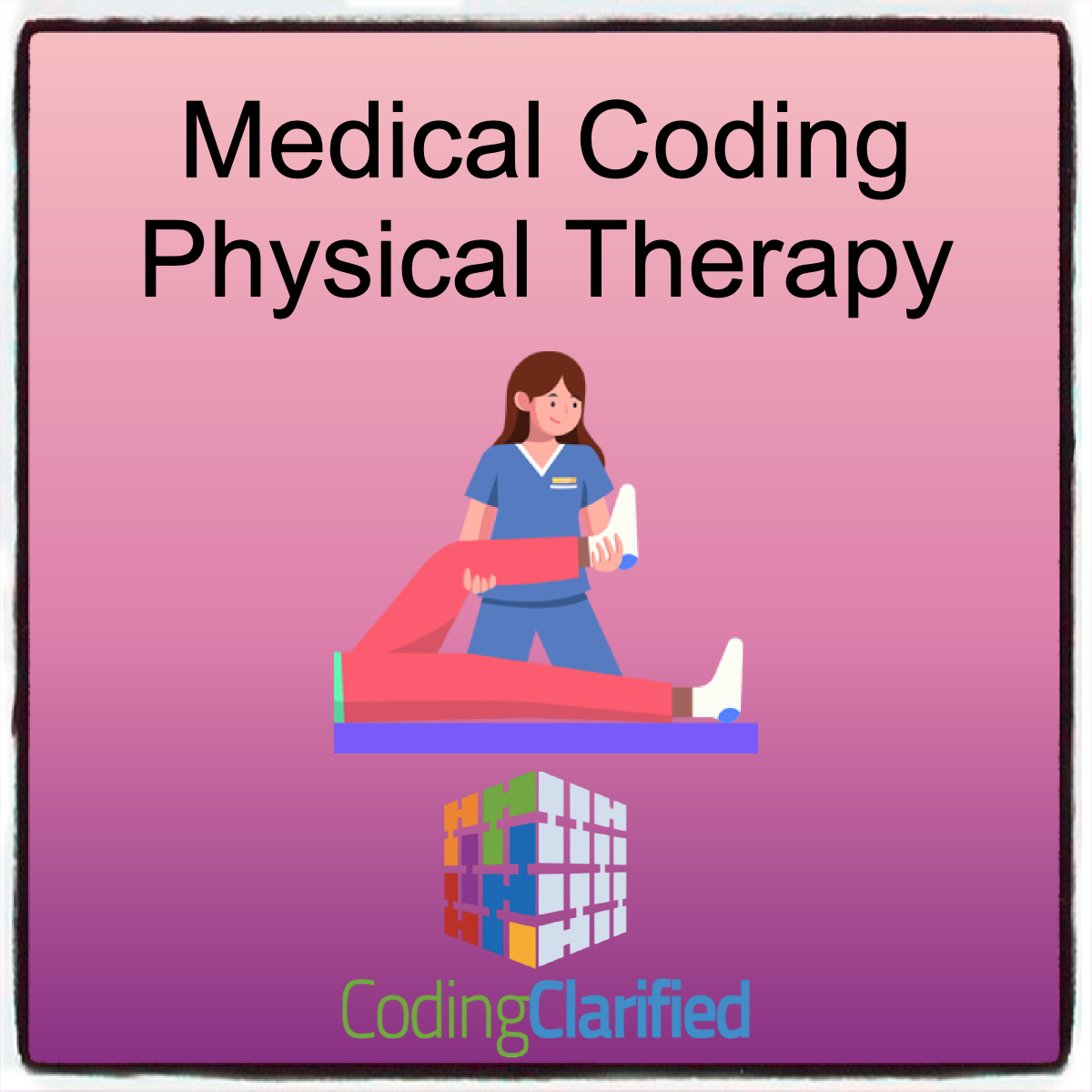Guidelines and Tips for Billing and Medical Coding Physical Therapy Services
Physical therapy (PT) is an essential component of rehabilitative care, but accurately coding and billing for PT services can be complex due to evolving payer rules, documentation requirements, and coding systems. Proper coding ensures timely reimbursement, reduces claim denials, and ensures compliance with healthcare regulations.
Understanding the Key Code Sets
CPT® (Current Procedural Terminology) Codes
CPT codes for physical therapy are divided into:
-
Evaluative codes (e.g., 97161–97163 for physical therapy evaluations)
-
Therapeutic procedures (e.g., 97110 for therapeutic exercises, 97112 for neuromuscular re-education)
-
Modalities (e.g., 97010 for hot/cold packs, 97035 for ultrasound therapy)
ICD-10-CM Diagnosis Codes
Accurate diagnosis coding supports medical necessity. Codes must reflect the patient’s condition and reason for therapy (e.g., M54.5 – low back pain).
HCPCS Level II Codes
Used for durable medical equipment (DME) and certain supplies related to physical therapy.
Know the Difference: Timed vs. Untimed Codes
-
Untimed codes (e.g., 97010, 97014) are billed once per session regardless of time spent.
-
Timed codes (e.g., 97110, 97530) follow the 8-minute rule, where a single unit can be billed if at least 8 minutes of a service is provided.
Tip: Combine minutes of all timed codes to calculate the total number of billable units.
Apply the 8-Minute Rule Correctly
Medicare and some private payers follow the 8-minute rule:
-
1 unit: 8–22 minutes
-
2 units: 23–37 minutes
-
3 units: 38–52 minutes
-
4 units: 53–67 minutes
Example: If you provide 25 minutes of therapeutic exercise (97110) and 20 minutes of manual therapy (97140), you may bill for 3 total units.
Medicare 8 Minute Rule https://codingclarified.com/medicare-8-minute-rule/
Accurate and Detailed Documentation Is Key
Documentation should clearly support:
-
Medical necessity
-
Type and duration of therapy
-
Goals and progress
-
Who performed the services (e.g., PT, PTA)
Tip: Ensure documentation aligns with the billed CPT codes to avoid audit issues.
Understand Supervision and Delegation Rules
-
Services by Physical Therapy Assistants (PTAs) must be supervised appropriately and modifiers (e.g., CQ for PTA services under Medicare) must be appended.
-
Different payers have varying supervision requirements; always verify payer-specific policies.
Use Appropriate Modifiers
Common modifiers in PT billing include:
-
GP – Services delivered under a PT plan of care
-
KX – Services exceed therapy cap but are medically necessary
-
59 – Distinct procedural service (used to avoid bundling edits)
-
CQ/CO – Services provided by PTAs/OTAs (Medicare)
CPT Modifiers https://codingclarified.com/cpt-medical-modifiers/
Anatomical Modifiers https://codingclarified.com/medical-coding-anatomical-modifiers/
Stay Updated on Medicare Guidelines
Medicare sets specific coverage limits and requirements:
-
Thresholds (formerly known as therapy caps) apply for combined PT and SLP services.
-
Reimbursement may be reduced for services provided by PTAs (85% of fee schedule).
-
Annual reevaluations may be required to justify continued therapy.
Tip: Use the KX modifier when exceeding thresholds, with documentation supporting continued medical necessity.
Check Payer-Specific Policies
Commercial insurers and Medicaid programs may have unique policies regarding:
-
Prior authorization
-
Session limits
-
Specific CPT code coverage
-
Telehealth allowances for PT (increasing post-COVID)
Avoid Common Pitfalls
-
Upcoding (billing for a more complex service than provided)
-
Unbundling services that should be reported together
-
Failing to link diagnosis codes correctly to each service
-
Billing timed codes without time documentation
Utilize Tools and Resources
-
Medicare’s Physician Fee Schedule Look-Up Tool
-
CMS therapy documentation requirements
-
APTA’s coding and billing guidance
-
Coding software with CCI edits and NCCI bundling rules
Effective coding and billing in physical therapy requires a clear understanding of CPT codes, payer policies, documentation standards, and compliance rules. Keeping up-to-date with industry changes and auditing internal processes regularly can help ensure proper reimbursement and reduce audit risks.
For more information, consult CMS guidelines or professional organizations such as the American Physical Therapy Association (APTA). https://www.apta.org/

